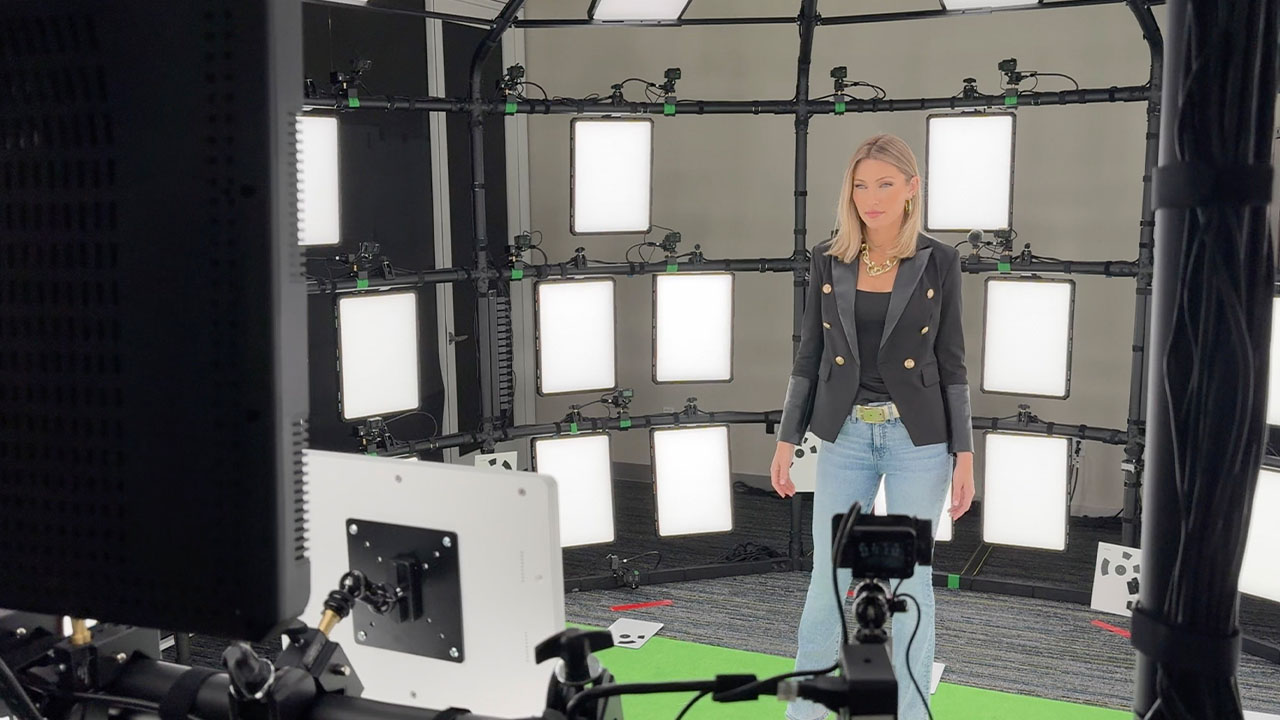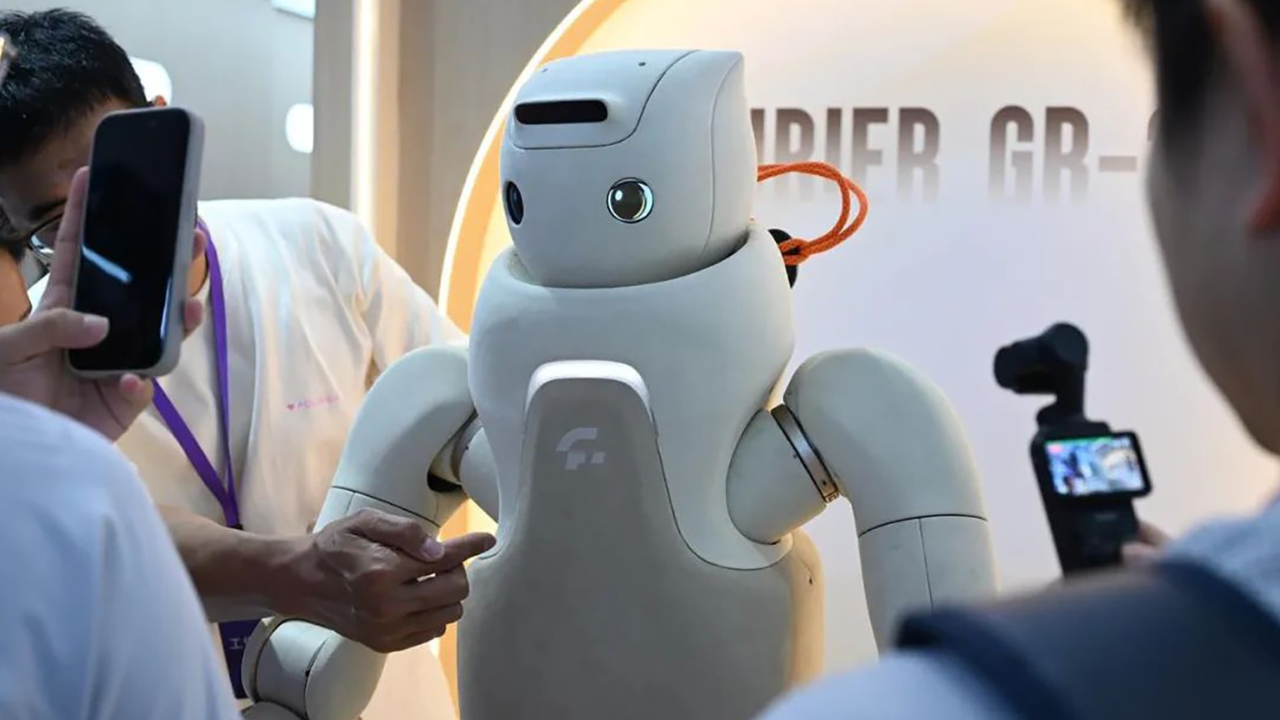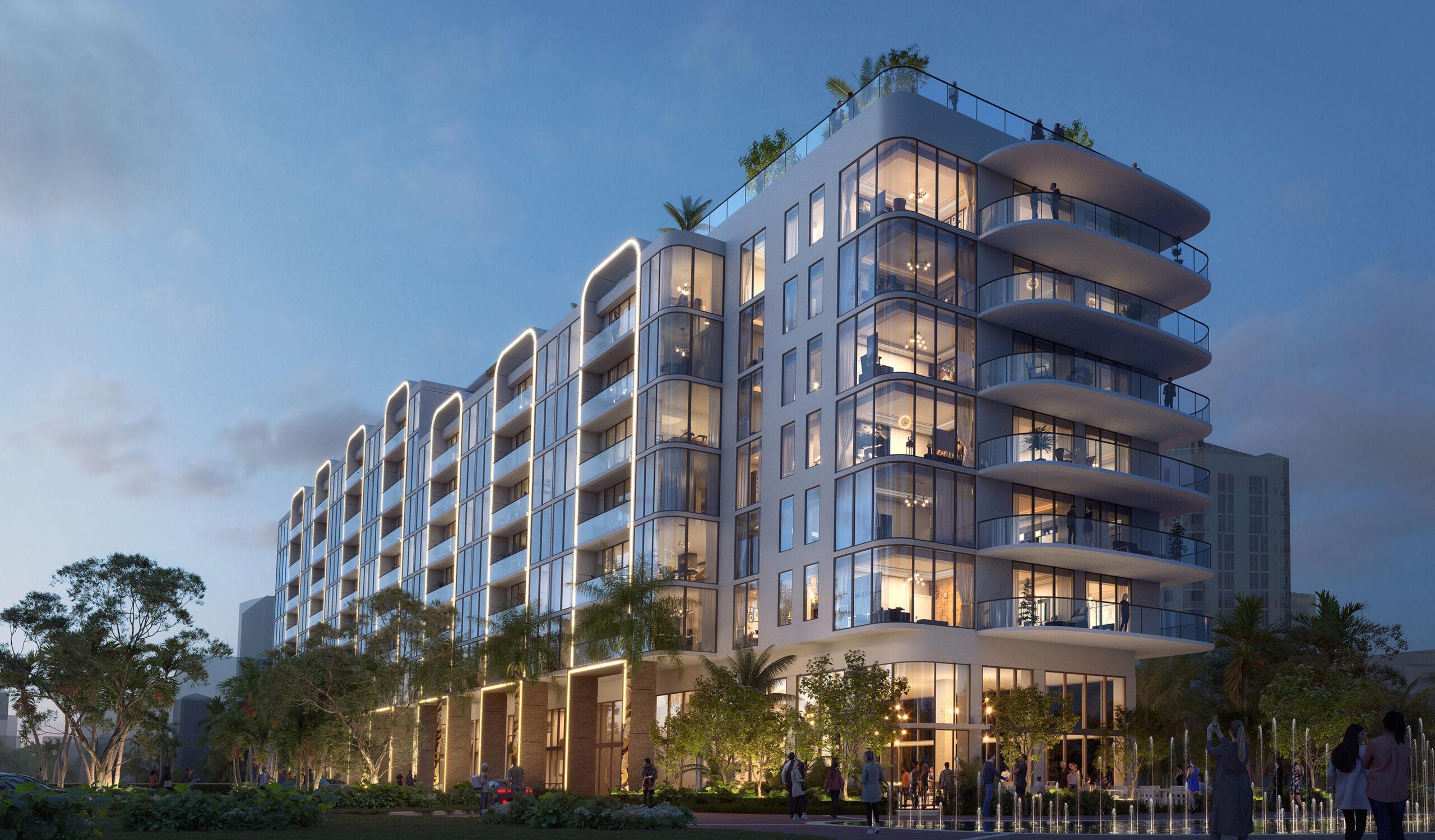If you want to create your digital twin, just drive to the Nova Southeastern University Campus and take the elevator to the fifth floor of the university’s library. There in the Alan B. Levan NSU Broward Center of Innovation, you will find the device that can do it.
It’s called the volumetric capture studio and looks vaguely like one of those hexagonal climbing sets found in parks. Walk into the middle of it and your image will be captured from every angle by 76 high-definition Sony cameras. Upload it to the cloud and the magic of creating your own personal hologram, or digital twin, happens.
With some editing, you can now put yourself in a variety of settings. If you want to be on the sand at the Cannes Film Festival, technicians can plop you there and even have you speaking French with your lips moving in synchronicity.
SFBW got a tour of the center from Dr. John Wensveen, NSU’s chief innovation officer and the center’s executive director. The capture studio is the only one available to the general public in North America. It’s so unique that it was the subject of a Today Show episode that talked how the capture studio can be used to create content for cutting edge displays, such as the Apple Vision Pro.

Wensveen took a deep dive into emerging technology four years ago when he started his position and learned about spatial computing, which are the systems that capture, process and interact with 3D data. It can bring the virtual and physical worlds together in a realistic way that the end use can experience in an immersive way on devices like the Vision Pro.
“It was like watching Star Wars again where you saw things, what the future might look like for holograms as an example,” Wensveen says
His research led him to Sony and a $1.94 million federal grant included funding for the system.
Clients can do multiple recordings throughout the day, which is the easy part and not cost prohibitive, he says. Files are selected and then uploaded to the cloud where it takes 24 hours for the application to turn it into your digital twin.
“Once we’ve got that completed, we then download it from the cloud into another server, and then that’s where the creative process begins, the editing of the animation, if you will,” Wensveen says.
Your digital twin can then be put into an environment that could be shot on an iPhone using 8th Wall Web AR, which works with any apps in Apple’s latest ios. NSU is partnering with GeniusXR a spatial content creation and platform development studio in Montreal. It has access to an array of environments whether real or virtual.
It’s hard to put a cost on a project, but a range of $30,000 to $100,000 is a starting point, based on what the requirements are going to be, Wensveen says.
The first South Florida business to use the capture studio is Boston Proper, which is in Boca Raton. It’s a catalog retailer that decided to get aggressive about the future by emphasizing ecommerce, partly through Shopify. It’s also partnered with Peak Activity, a global ecommerce consultancy.
Adrian X. Miramontes, Boston Proper’s CFO and COO liked the idea of Apple getting into spatial reality because it has a history of going into markets, disrupting them and taking them over.
President and CEO Sheryl Clark was captured so she could introduce the brand and a model wore different outfits.
“I am hard pressed to see that this isn’t going to change the way that people shop because you can now create more of a one-on-one experience in a way that is so much different than just looking at a two-dimensional screen,” Miramontes says.

The company has also started making videos with the Vision Pro at catalog shoots to build up a library for the future.
“It’s not that the technology is there yet, it’s about where it’s going to be in three to five years and really getting in front of that,” Miramontes says.
“There is no way how Lucy shops today—we call our customer Lucy—is going to be how she shops at the end of the year next year or in the future,” Clark says.
The benefit for Boston Proper is they didn’t have to hop on a jet somewhere to find the technology. It’s right here in South Florida.














